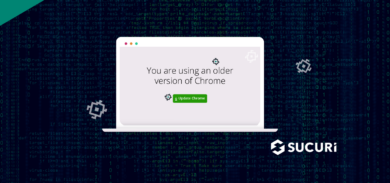There are many threats that can harm your website and your users, but one of the most dangerous is phishing. Phishing is a method used by bad actors to trick people into giving up their personal information. This can lead to identity theft, financial loss, and damage to your website’s reputation.
To help you understand and prevent these attacks, we’ve created a new comprehensive guide on phishing.
Read the Phishing Attack Guide
Understanding phishing
Phishing is a type of cyber attack where the attacker pretends to be a trusted entity to trick victims into revealing sensitive information. This can happen through various channels such as emails, instant messages, or phone calls.
The attacker usually sends a message that appears to be from a trusted source, such as a bank or a social media site. The message often contains a link to a fake website that looks identical to the legitimate one. Once the victim enters their information on the fake website, the attacker can steal it and use it for malicious purposes.
Phishing attacks can take many forms. Some are broad and target a large number of people, while others are more specific and target a particular individual or organization. Regardless of the type, all phishing attacks have the same goal: to trick the victim into revealing their sensitive information.
Phishing categories
There are several categories of phishing attacks that you should be aware of. Each type has its own characteristics and methods, but they all have the same goal: to trick you into revealing your sensitive information.
- Email Phishing: This is the most common category of phishing. The attacker sends a fraudulent email to the victim, pretending to be from a trusted organization. The email contains a link to a fake website where the victim is asked to enter their personal information.
- Spear Phishing: This is a more targeted version of phishing. Instead of sending emails to a large number of people, the attacker targets a specific individual or organization. The email often contains personal information about the target to make it more convincing.
- Whaling: This is a type of spear phishing that targets high-level executives. The attacker aims to steal personal data or gain access to sensitive corporate information.
- URL Phishing: This category of phishing involves the use of fraudulent URLs. The URLs often look similar to those of legitimate websites, but with slight alterations or misspellings. When the victim clicks on the URL, they are taken to a fake website where they are asked to enter their personal information.
- Vishing (Phone Phishing): This phishing category uses phone calls to trick the victim. The caller pretends to be from a reputable company and asks the victim to provide their personal information.
- Smishing (SMS Phishing): This type of phishing uses text messages to trick the victim. The message often contains a link to a fake website where the victim is asked to enter their personal information.
Protecting yourself against phishing
Preventing phishing is not an easy task, but it is possible with the right knowledge and tools. Here are some steps you can take to protect your website from phishing attacks:
- Know the tricks: Phishing attacks have some common signs. Look out for things like weird email addresses, bad spelling, urgent calls to action, and messages that ask for your private info. Our new guide provides detailed information on different types of phishing attacks and how to recognize them.
- Check before you click: If a message asks you to click a link or download something, make sure it’s safe first. You can do this by hovering over the link to see where it really goes. If it looks phishy, don’t click!
- Stay secure online: Only use websites that are secure. You can tell if a website is secure if the URL starts with “HTTPS” and there’s a lock symbol.
- Use secure communication channels: Always use secure communication channels for transmitting sensitive information. This can help protect your information from being intercepted by attackers.
- Keep software up-to-date: Make sure all your software is up to date. This includes your website software, plugins, and themes along with your browser, antivirus software, and operating system. Updates often fix security problems and known vulnerabilities that attackers can use.
- Implement two-factor authentication: Two-factor authentication adds an extra layer of security to your website. Even if a phisher manages to steal your password, they won’t be able to access your account without the second factor.
- Regularly monitor your website: Regularly check your website for any signs of malware or harmful behavior. This can include unusual user activity, changes to your website’s files, or suspicious emails or messages.
Read the Phishing Attack Guide
Get help with phishing malware
Phishing attacks can pose a serious threat to your website and visitors. But with the right knowledge and tools, you can protect your website from these attacks. Our new guide on Phishing Attacks provides comprehensive information on understanding, identifying, and preventing phishing attacks.
If you believe that your website or server has been infected and you need a hand, our experienced analysts are available 24/7 to help get rid of malware infections and restore your site.










